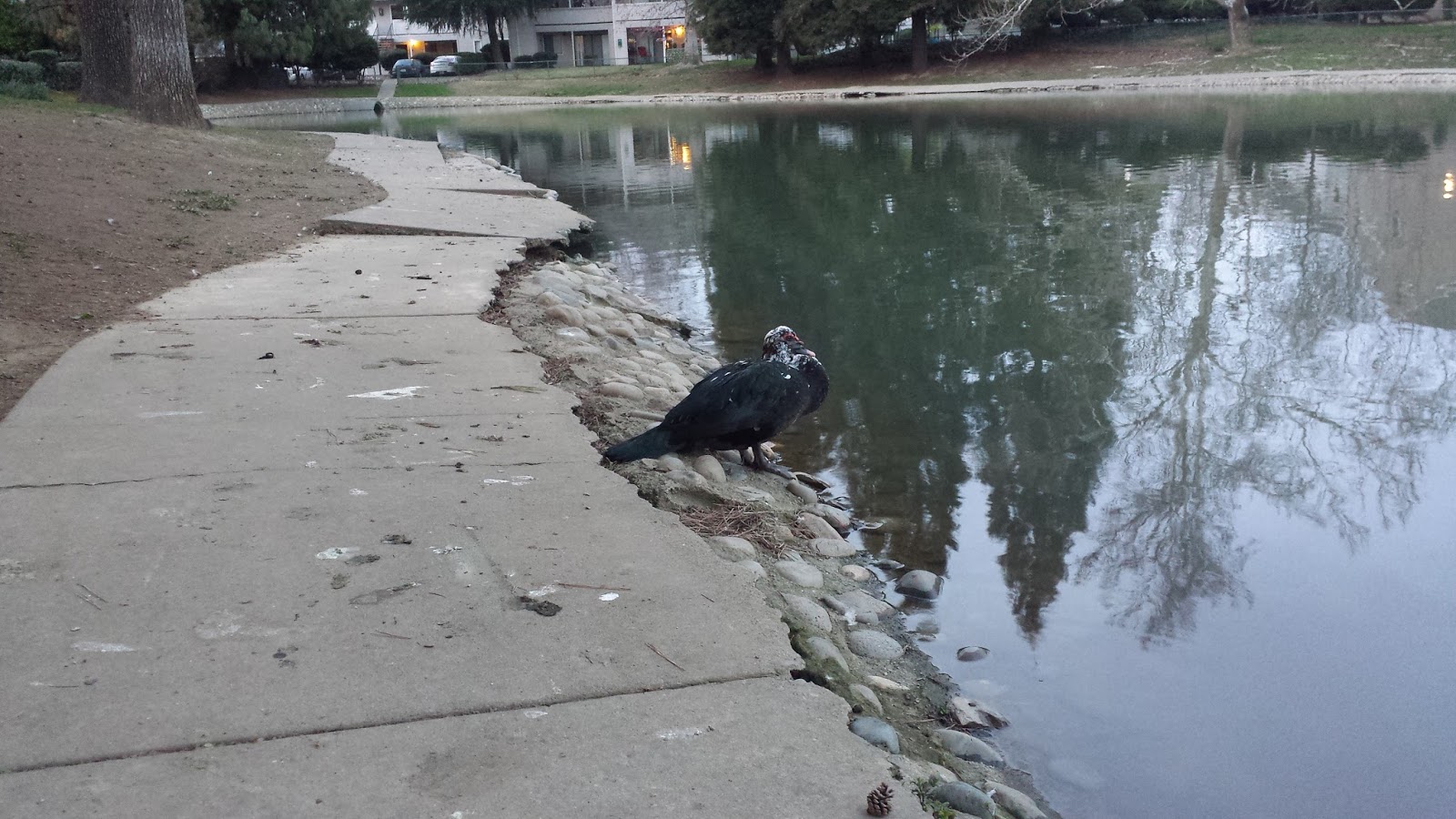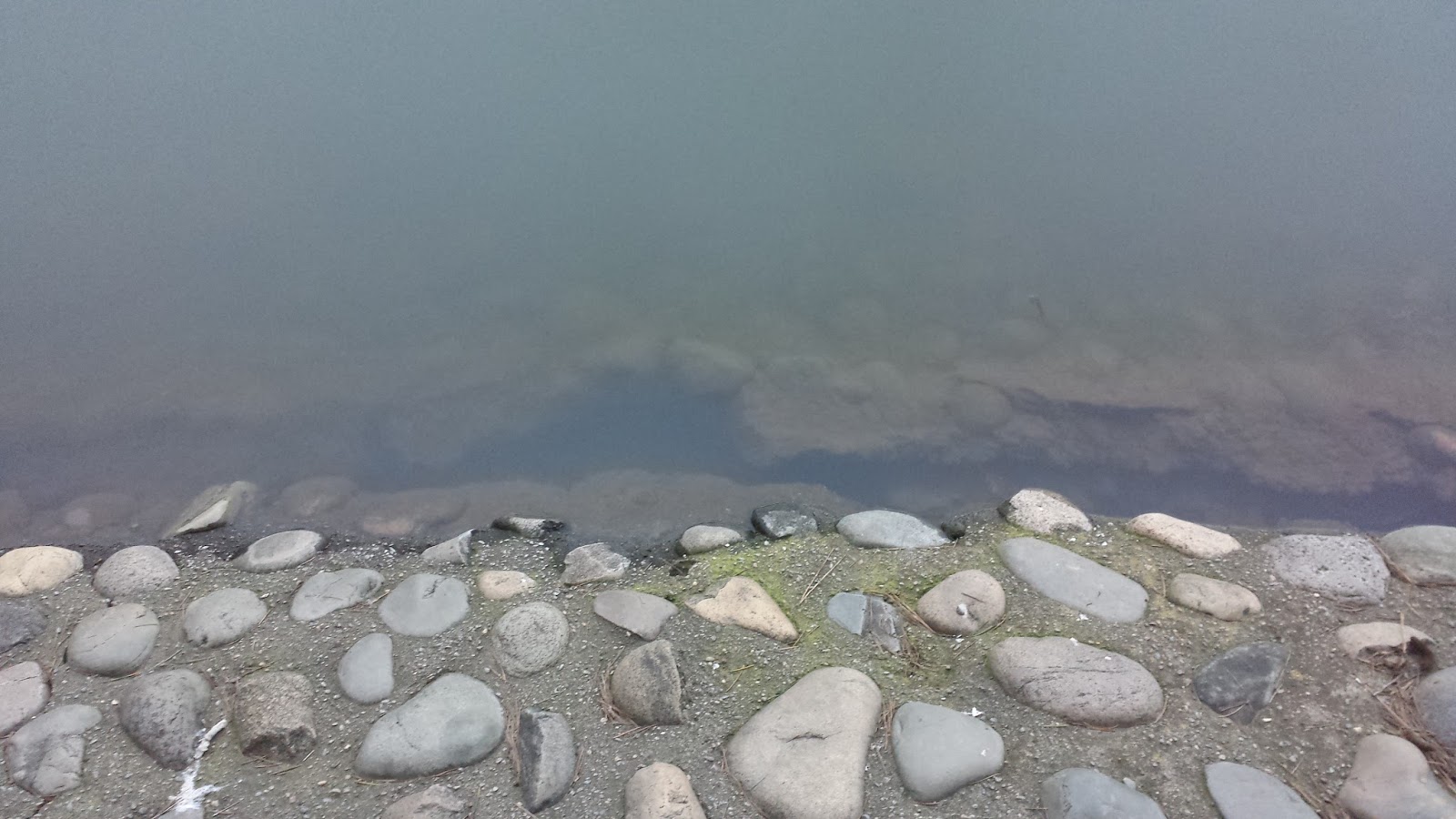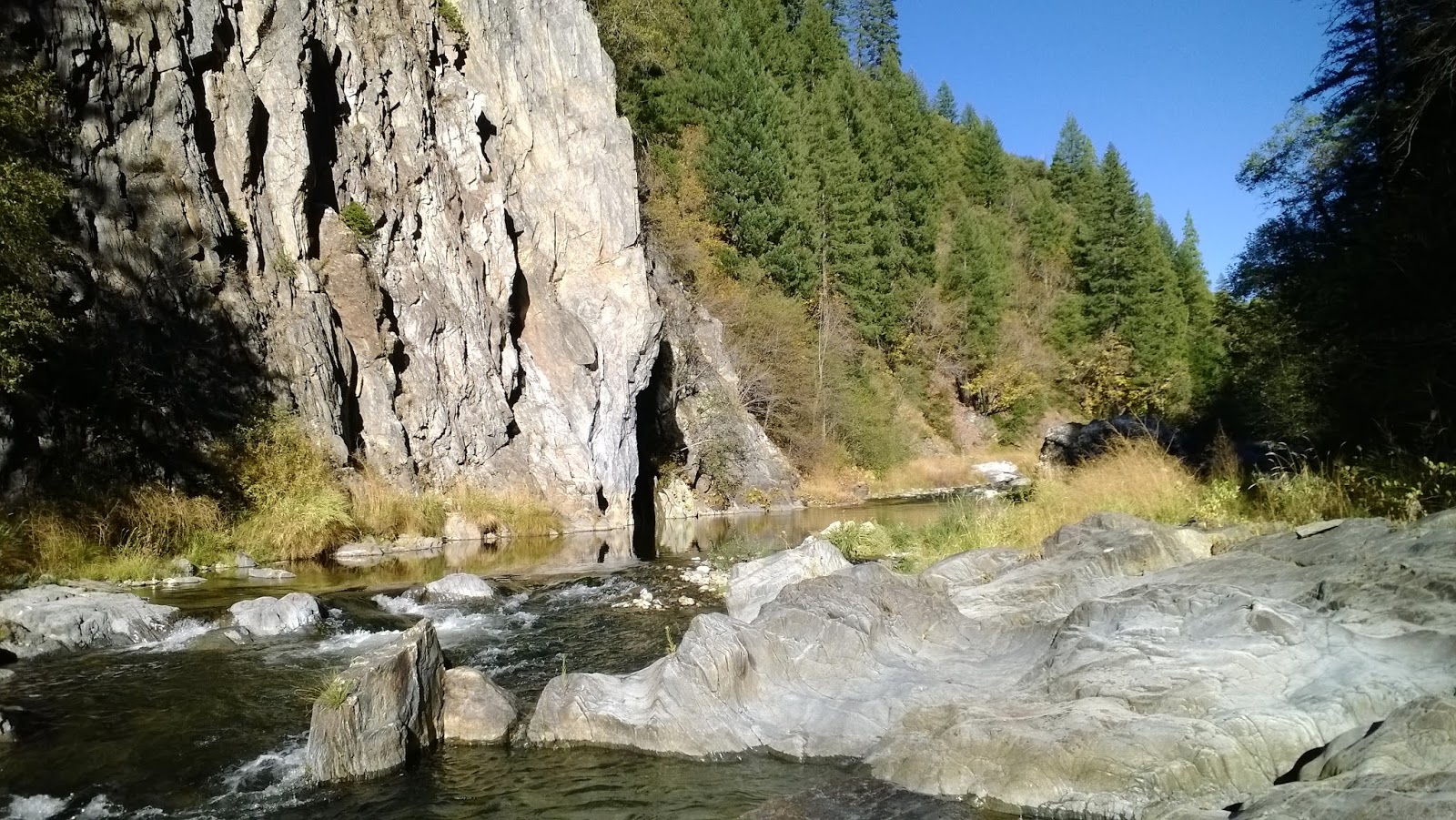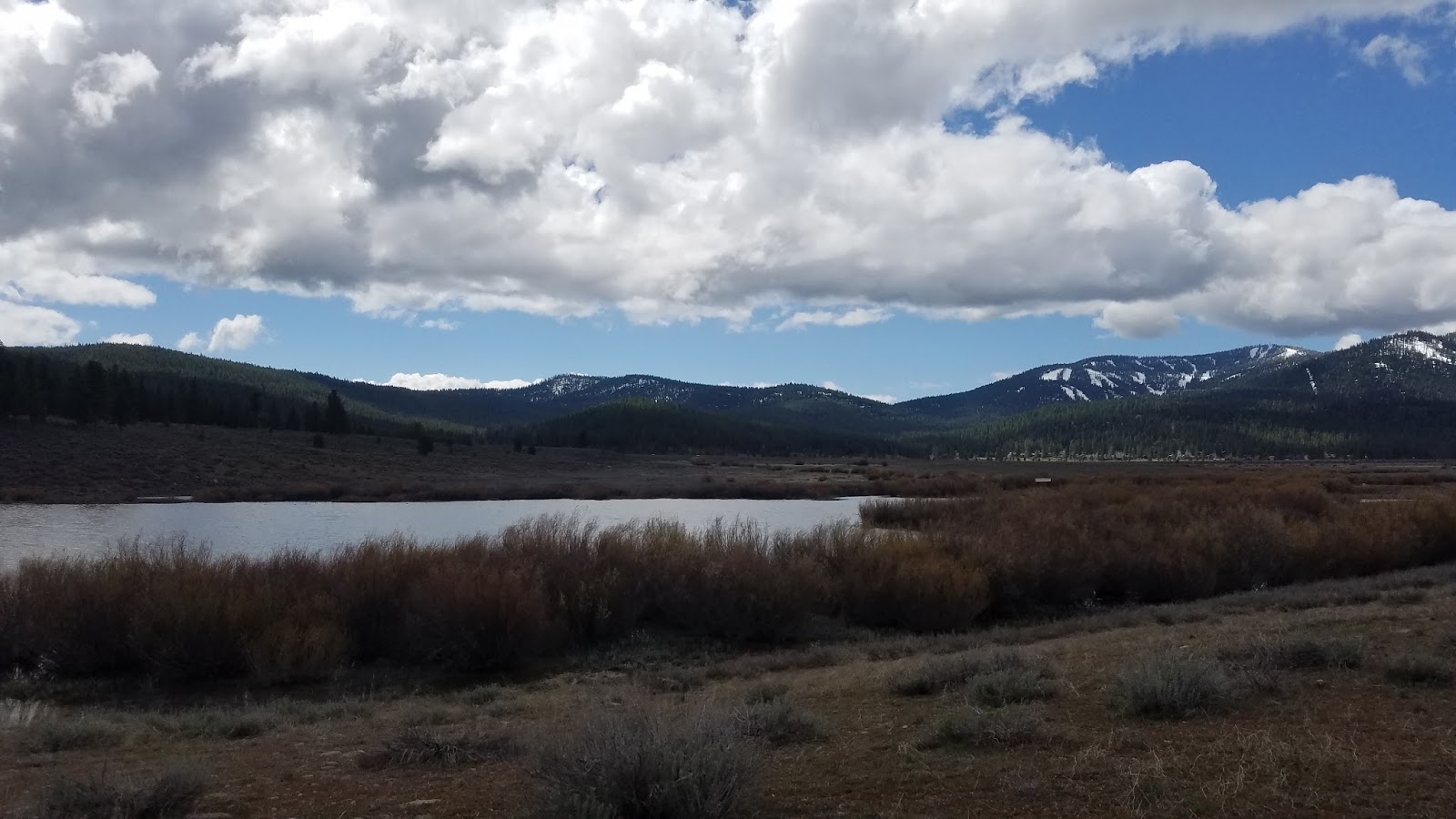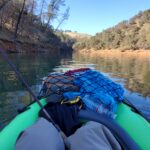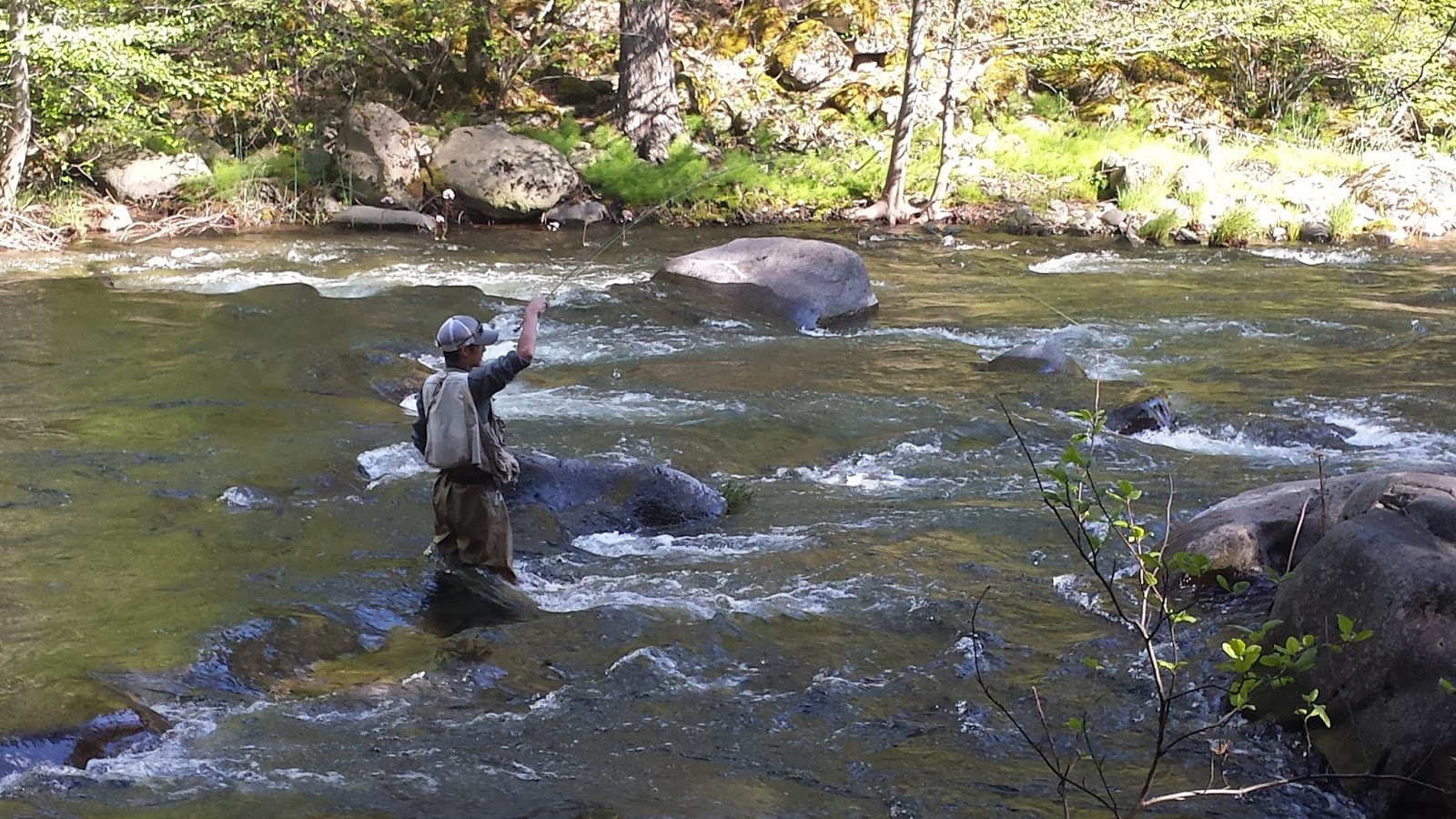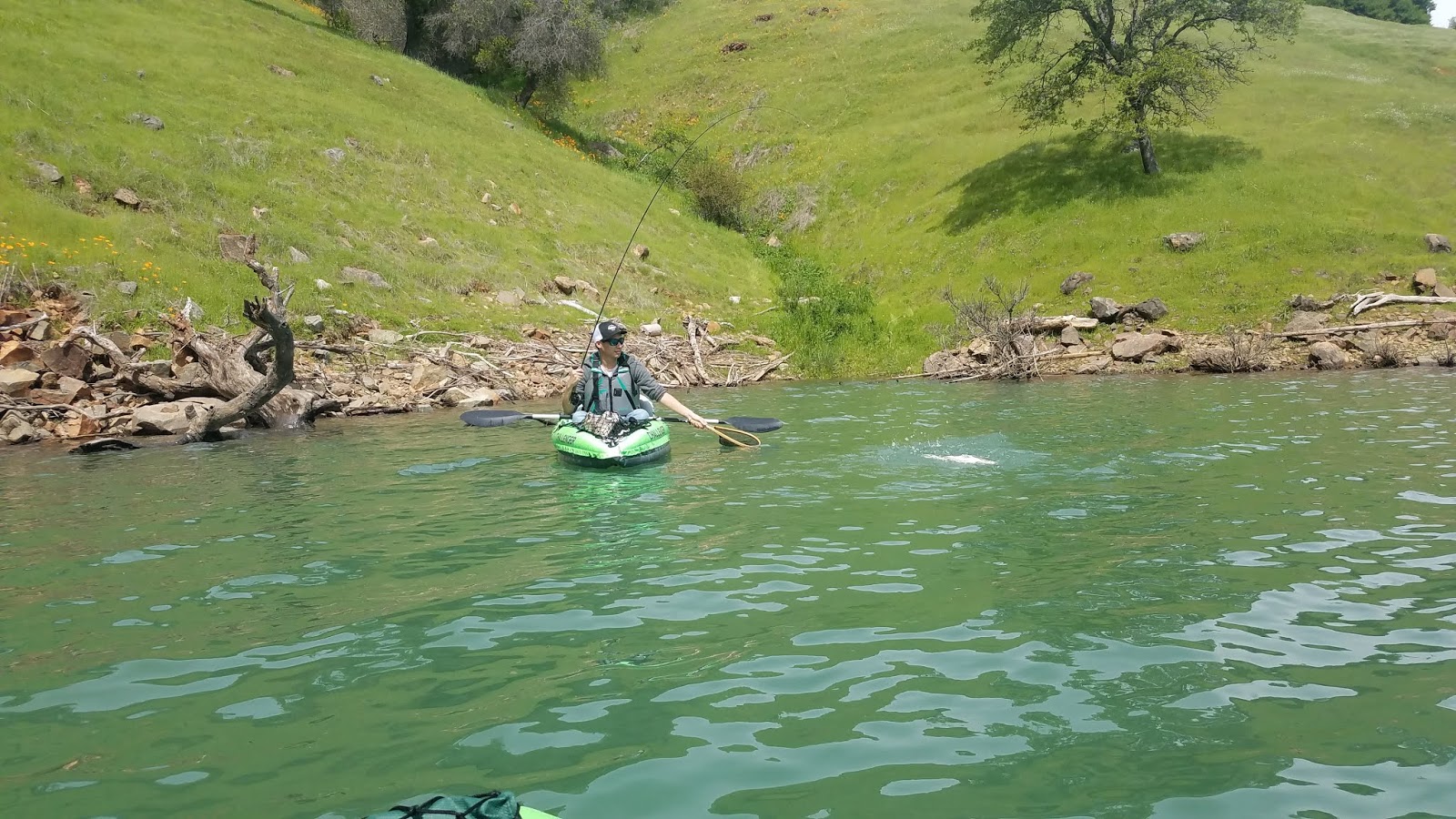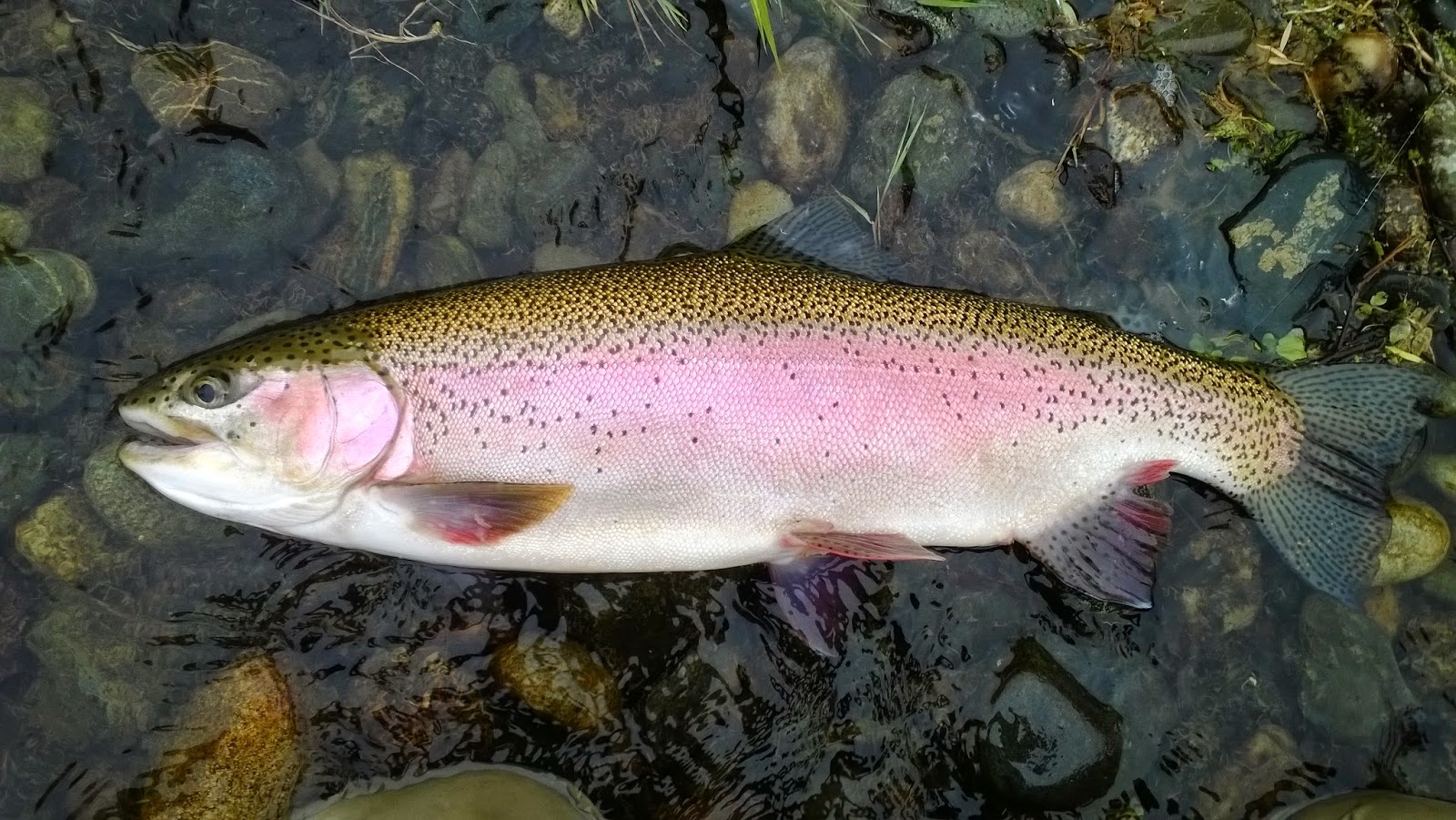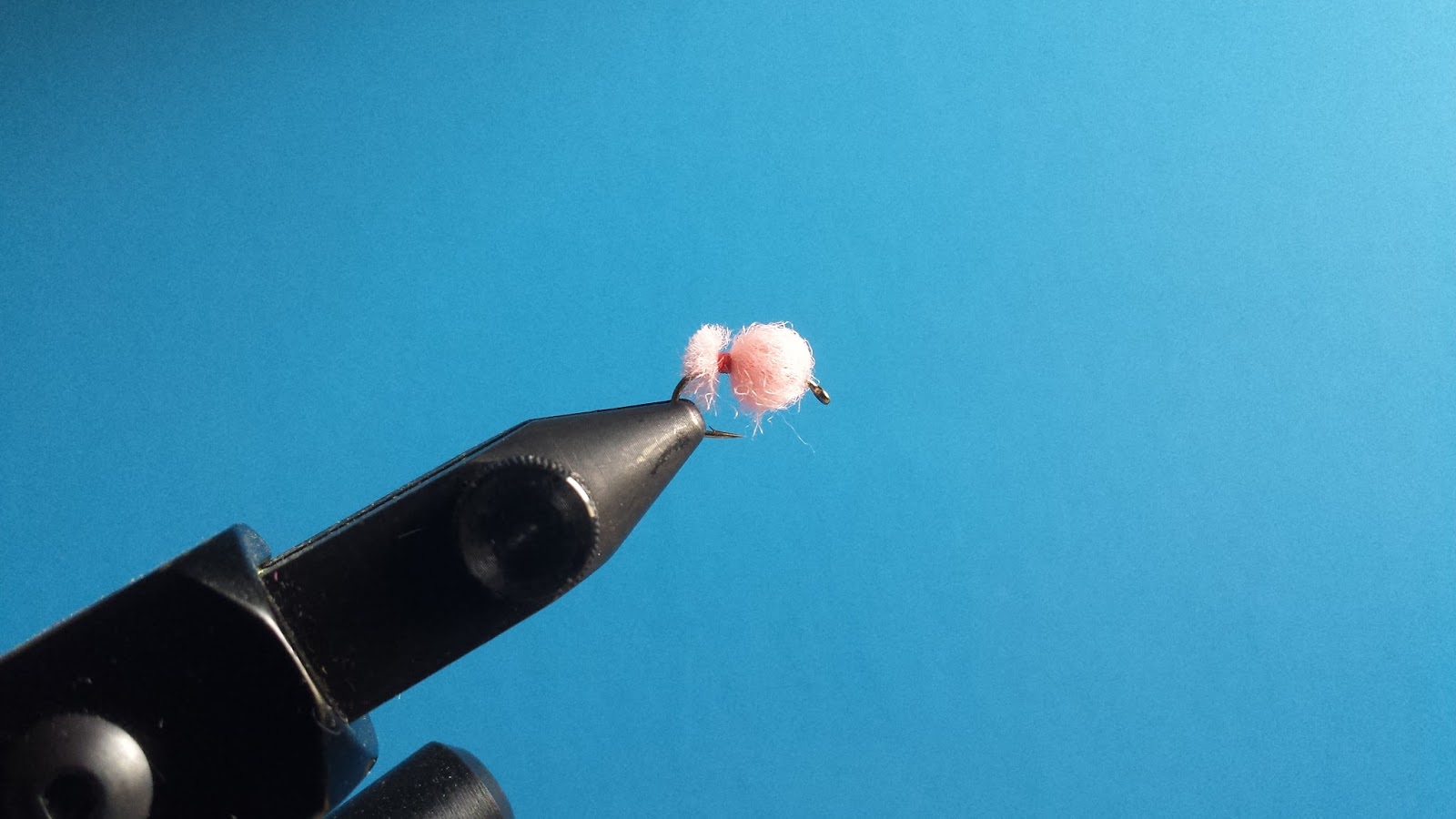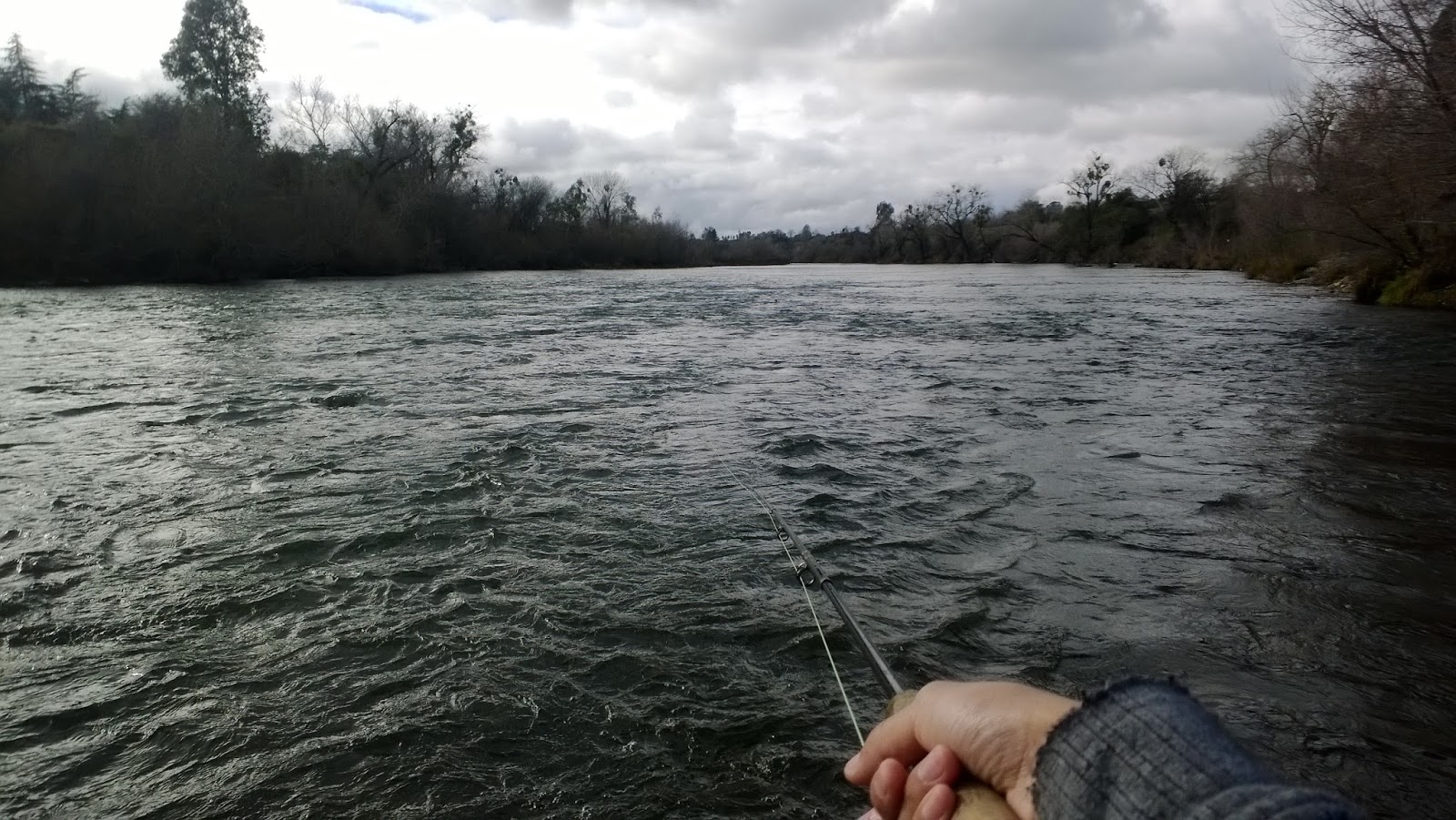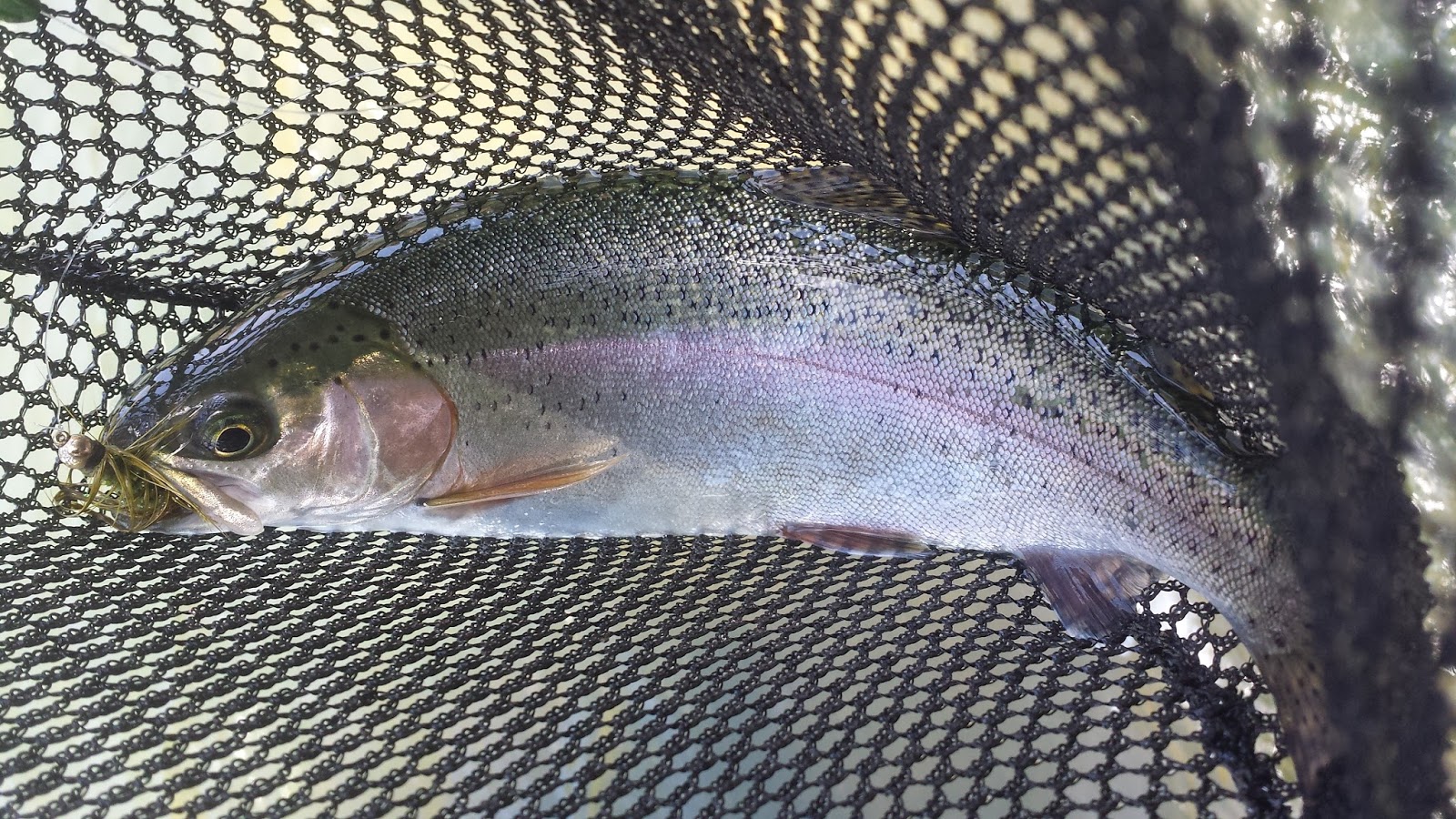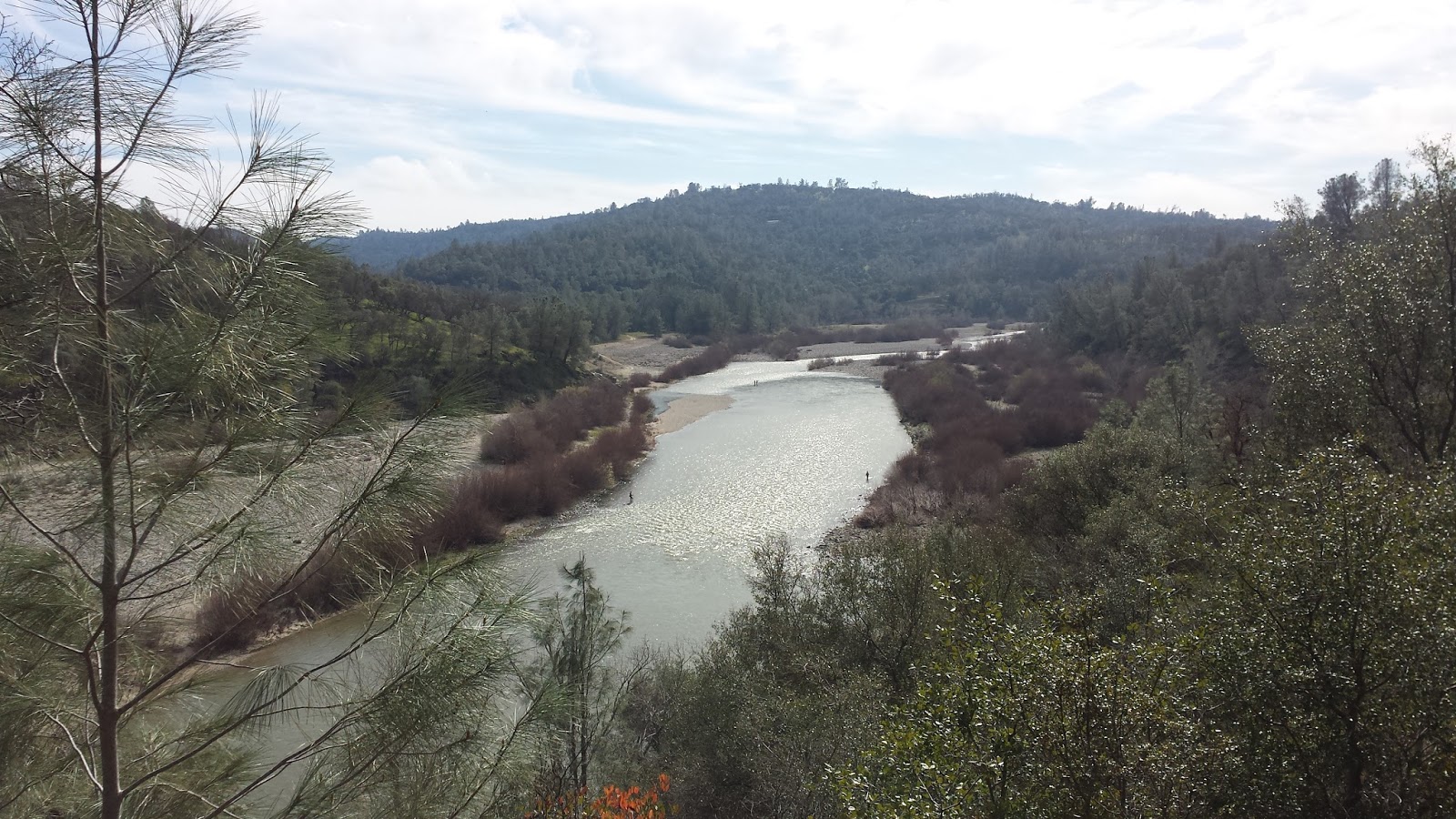 |
| Murky Yuba Day |
The Yuba is still murky but continues to teach and reward those who learn. The flows are somewhat stable at around 1,000 CFS and the clarity is about 2ft – 3ft with clearer conditions in the shallower water. The skwalas are out but the tinted conditions are making it tough for the fish to see them. Nymphing is the name of the game.
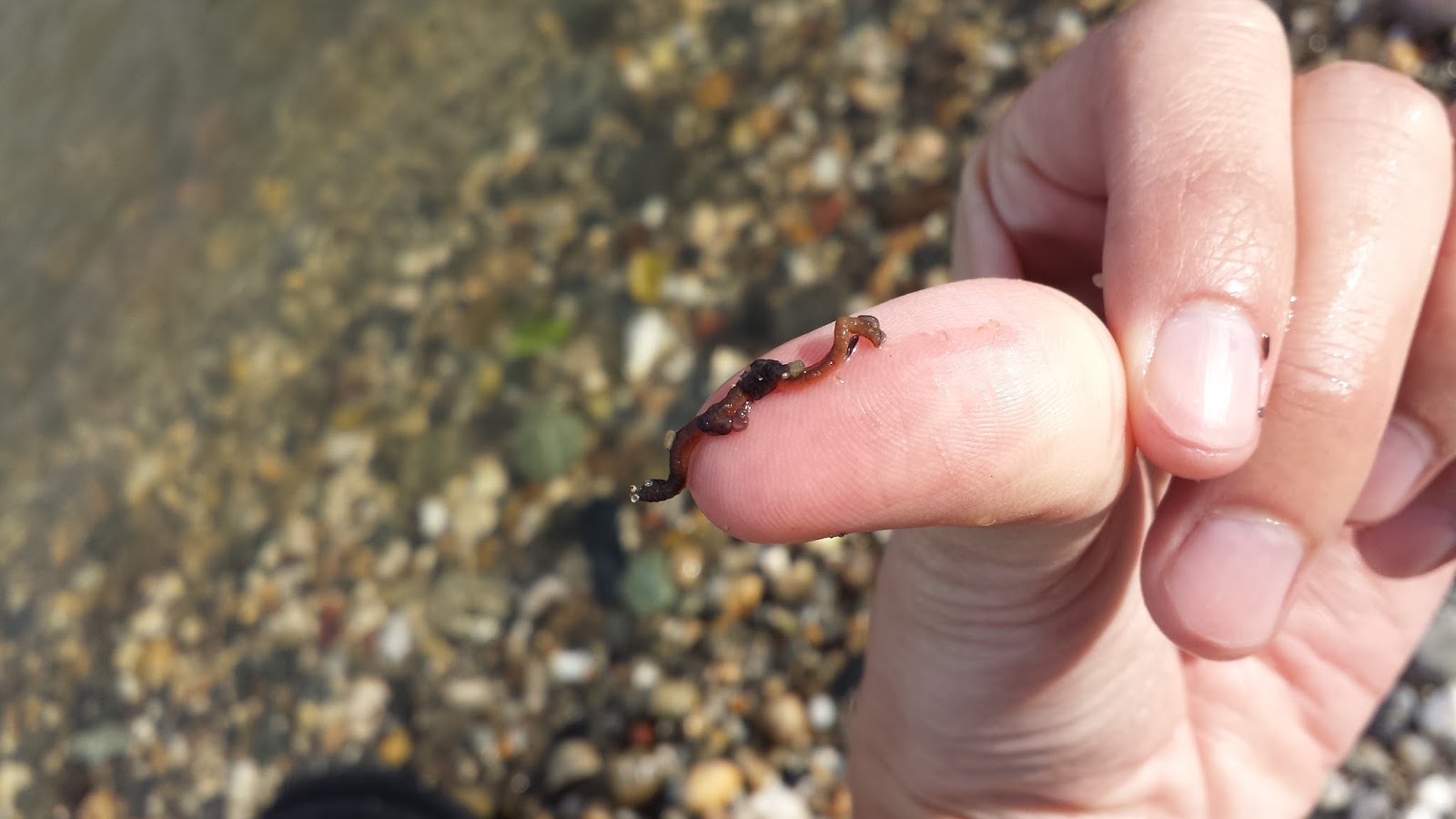 |
| Murky Water = San Juan Worm |
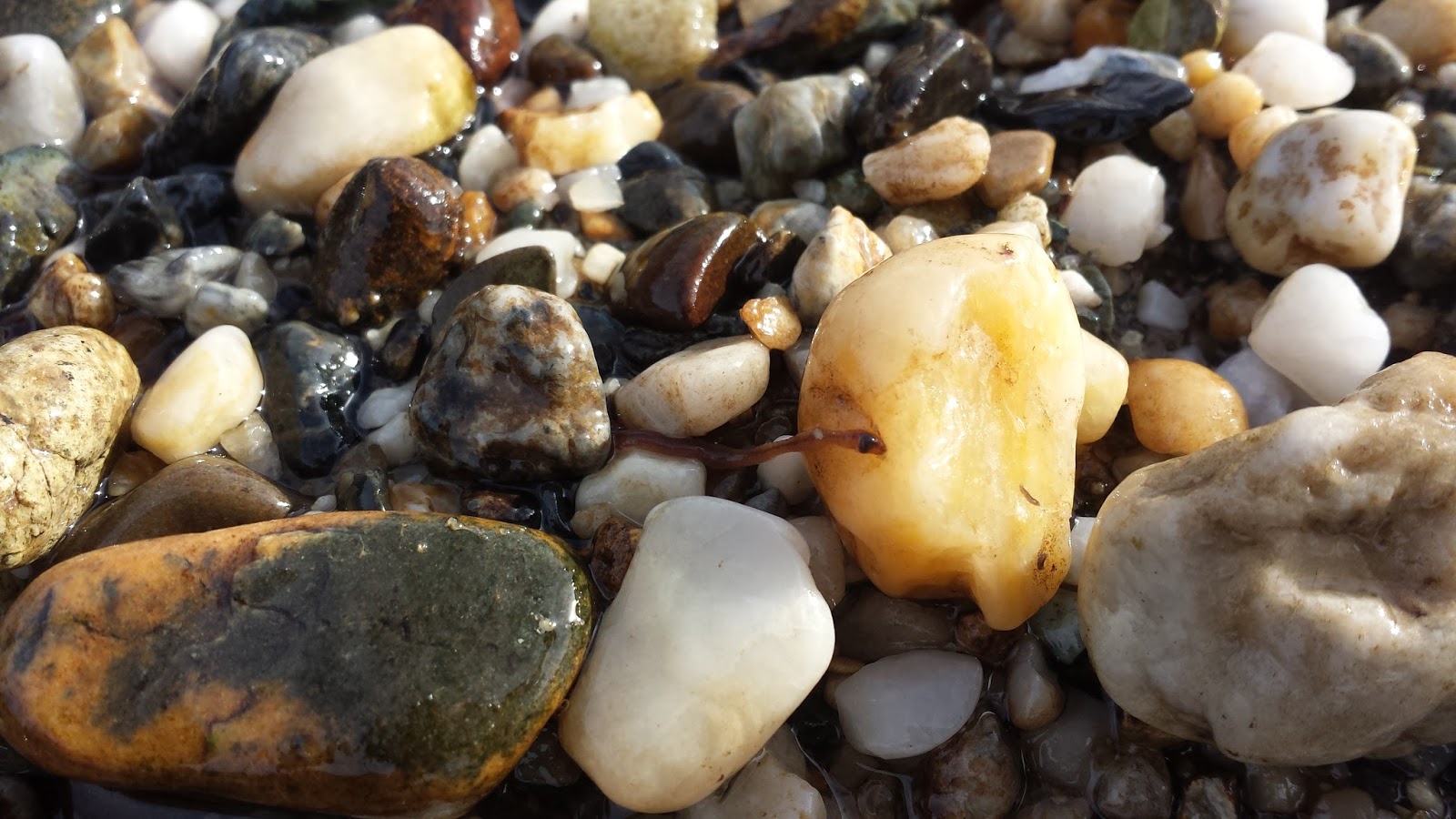 |
| I’ll Have a Worm On The Rocks |
Veteran fly anglers will tell you that San Juan worms are “not real flies” and if you fish them you might as well be using bait. That couldn’t be any further from the truth. When conditions are wet, worms will crawl to the surface in efforts to try and move greater distances. Contrary to popular belief, worms do not come to the surface to avoid drowning as they can survive for long periods submerged underwater.
The majority of my hook ups were on red San Juan worms and after looking around a bit I found the reason why. Match the hatch!
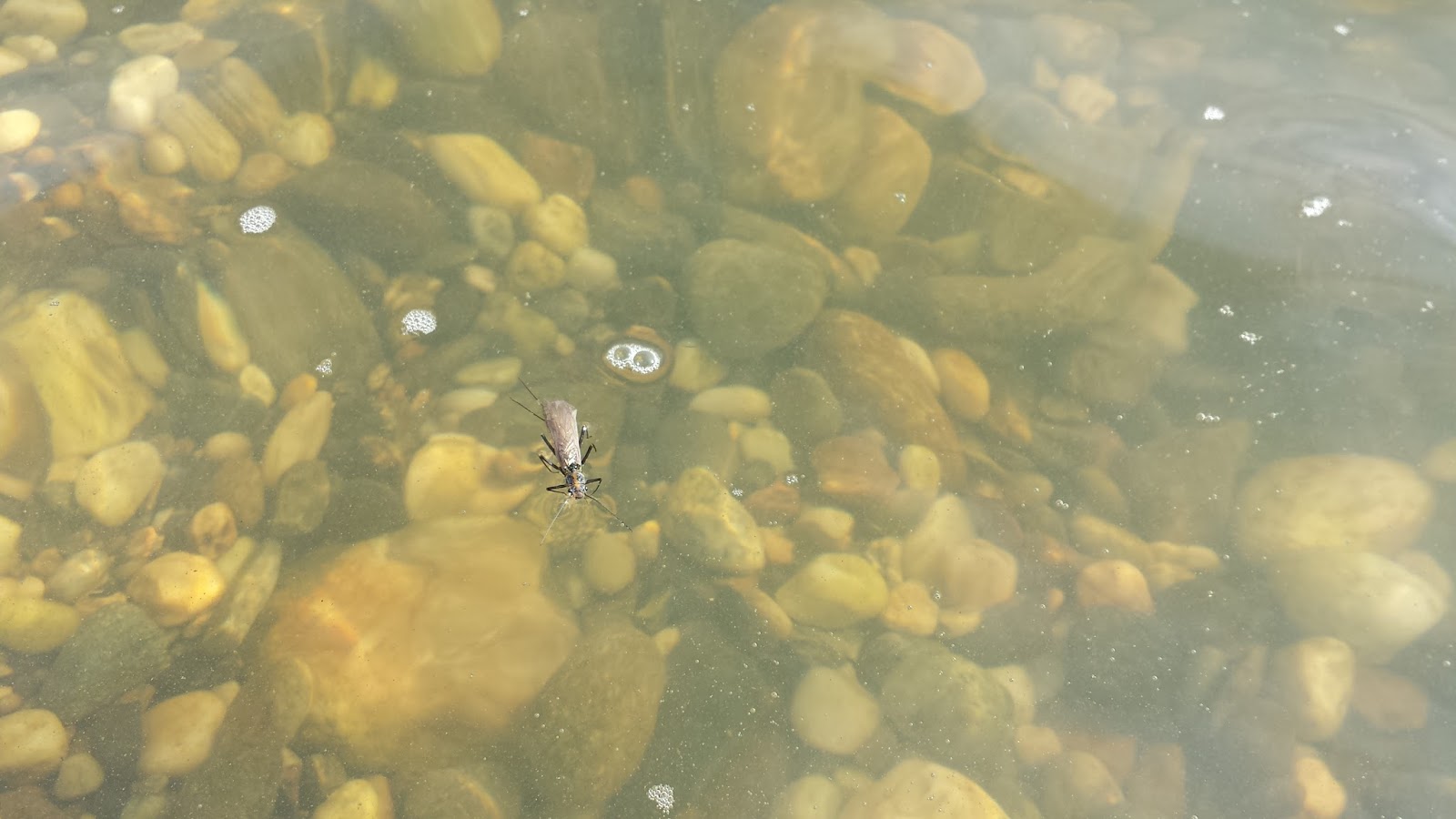 |
| Skwala Time of the Year |
The skwalas started coming out in the afternoon but the fish weren’t on them. After nymphing most of the day I finally saw a fish rise and switched to a skwala dry. My first cast upstream and I get the take. A great rise but I wasn’t able land it; still, it was exciting to finally get a fish to come up and grab a big dry fly.
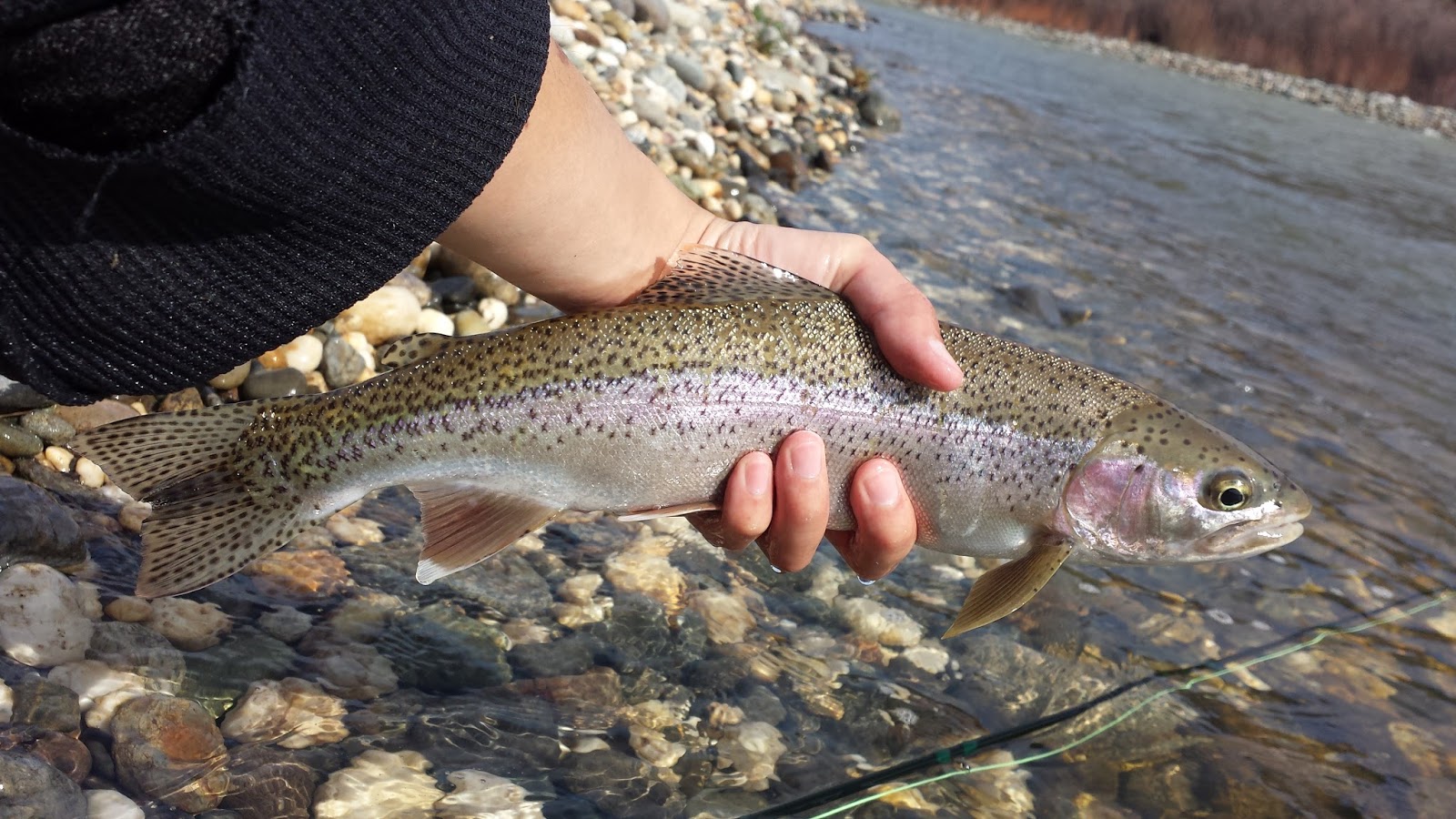 One of the Best Yuba Natives I’ve Landed
One of the Best Yuba Natives I’ve Landed
Looking for trout in murky conditions is like looking for hidden treasure. The fish in the Yuba only bite once a day therefore once you find and hook one it’s pretty much game over for that fish. Today I landed four out of nine; definitely one of my better days.
Rootitus
Rootitis is one of the most common afflictions of beginning nymph fishers, and it will seriously limit your success. How do you know if you have rootitis? If you find yourself parked in one spot fishing nymphs for 30, 20, or even ten minutes without getting a strike and not moving, you have rootitis. Many of the anglers I watched today on the Yuba have rootitus. Cover water and keep moving!
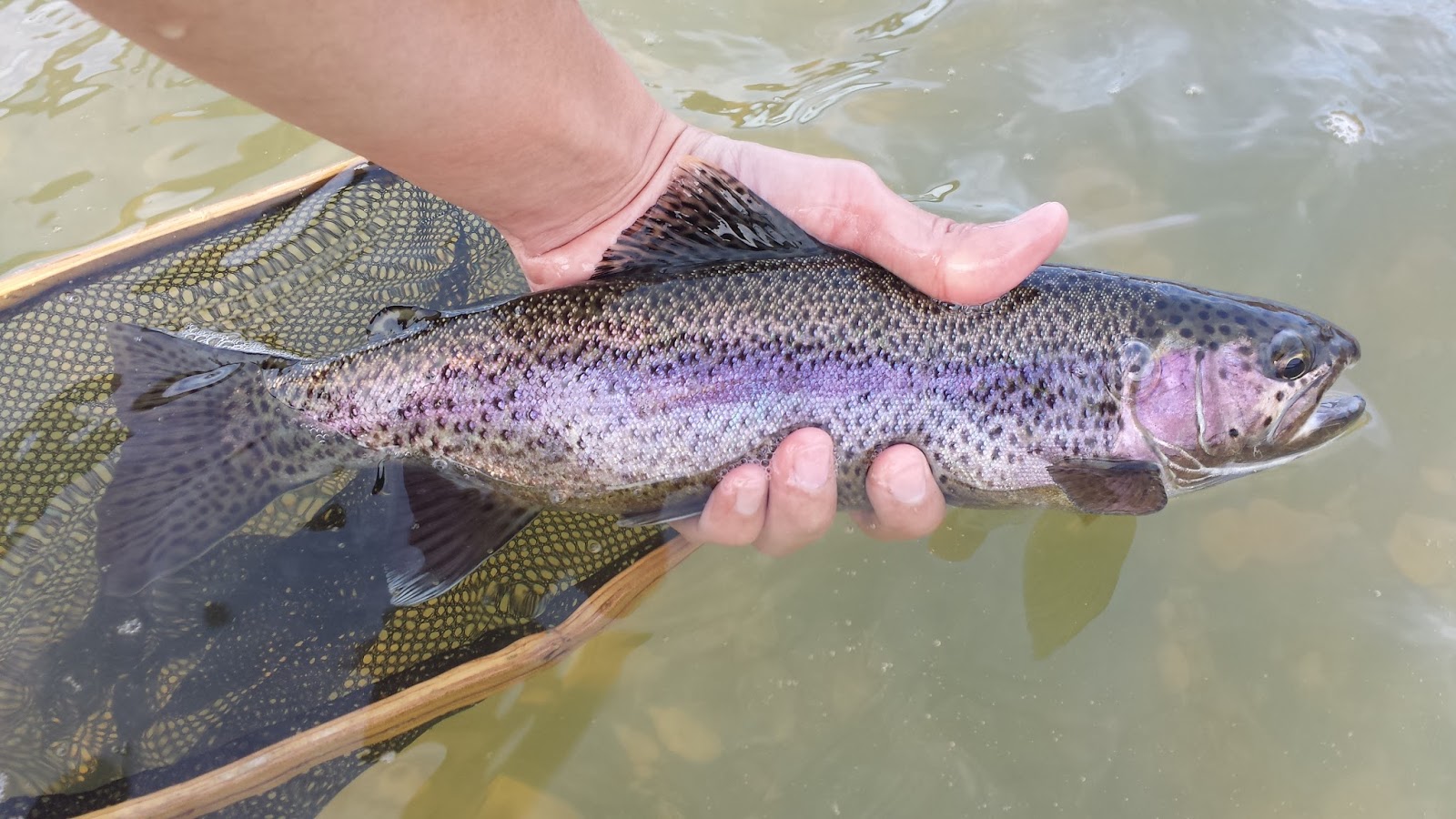 |
| Strong Pretty Bows All Day |

